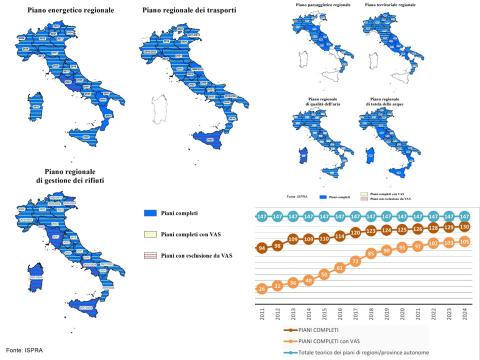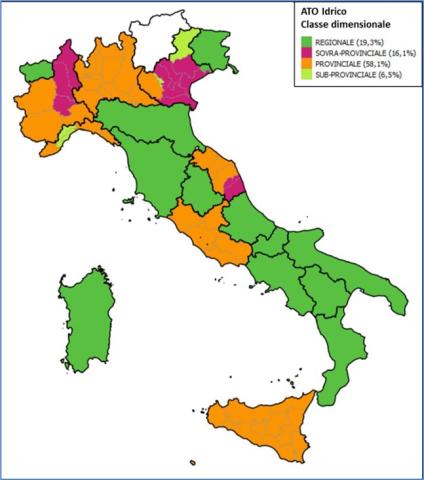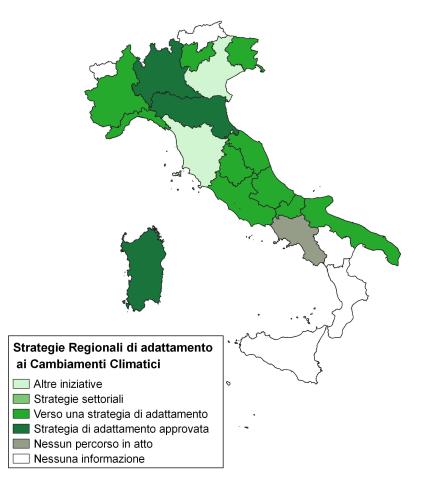Aree
PLANS WITH APPLICATION OF THE SEA AT REGIONAL LEVEL
Data aggiornamento scheda:

The indicator provides an overview of the regional planning in force relating to seven types of plan and the state of application of the related Strategic Environmental Assessment (SEA) processes. As of December 31, 2024, 130 floors have been completed out of a total of 147 planned floors, for a coverage of 88%. In the same period, the total number of complete plans in force with SEA rose to 105, which represents 71% of all complete plans envisaged (147) and 81% of the plans currently complete (130).
STATUS OF APPROVAL OF MUNICIPAL NOISE MITIGATION PLANS
Data aggiornamento scheda:
The Municipal Noise Mitigation Plan is legally established as a fundamental tool for managing and resolving noise pollution issues within a territory. This plan follows the primary municipal requirement: the Noise Zoning Plan. The Noise Mitigation Plan must be coordinated with all other urban planning tools and must incorporate the content of noise containment and reduction plans for transport infrastructure. As of 2023, this planning instrument remains scarcely implemented at the national level: only 66 out of 5,097 municipalities with an approved Noise Zoning Plan have also adopted a Noise Mitigation Plan, maintaining a percentage slightly above 1% over the years.
PROGRESS STATUS OF OPTIMAL TERRITORIAL AREA PLANS
Data aggiornamento scheda:

In water resource management, the Area Plans (PdA) serve as a tool to plan and program activities for the Integrated Water System (SII). This system encompasses public services such as water abstraction, conveyance, and distribution for civil uses, as well as sewage and wastewater treatment. The indicator provides a national overview of the Area Plans currently in force within the Optimal Territorial Areas (ATO) into which the territory is divided, in accordance with current legislation.
At present, the national territory is divided into 62 ATOs, demarcated by the regions based on rules contained in the Environmental Code (Legislative Decree No. 152 of April 3, 2006, Part III). This legislation does not set minimum dimensional limits for the ATOs but outlines criteria for their delimitation, which refer to:
- (i) Basin unit and location of resources, and constraints for the destination of these resources for the affected urban centers.
- (ii) Management unity (i.e., provision of all components of the integrated water service across the entire ATO by a single management entity).
- (iii) Adequate management size (defined based on physical, demographic, and technical parameters).
CLIMATE CHANGE ADAPTATION STRATEGIES AND PLANS
Data aggiornamento scheda:

Regional Climate Change Adaptation Strategies and Plans are the primary tools available to regional authorities to address the impacts of climate change and implement actions aimed at reducing territorial vulnerabilities. In Italy, the number of adopted regional strategies and plans remains very limited. Despite the absence of a binding regulatory framework and a national programmatic reference context, there are ongoing initiatives, projects, and climate vulnerability studies that are expected to lead toward the formal adoption of first Adaptation Strategies and subsequently Climate Change Adaptation Plans. The challenge posed by climate change urgently requires the definition and implementation of concrete actions to enhance territorial resilience.